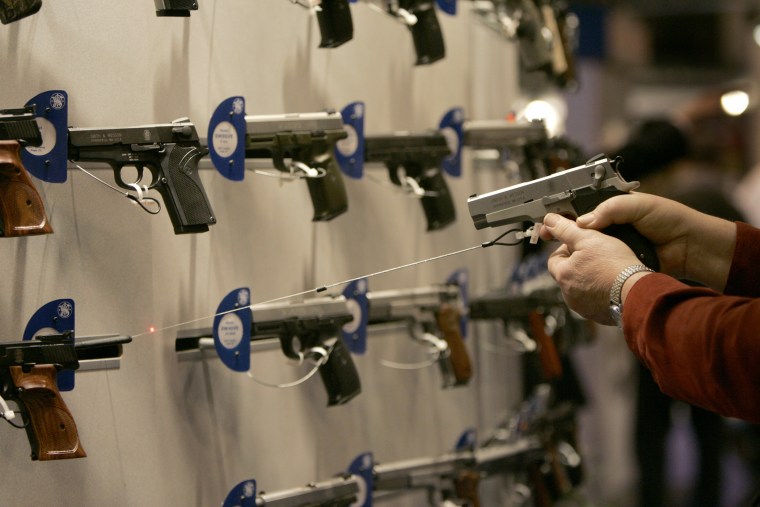The day after the mass shooting in Parkland, Fla., House Speaker Paul Ryan (R-Wis.), a longtime opponent of new gun measures, said Congress needs to "take a breath and collect the facts." The Republican leader added, "We don't just knee-jerk before we even have all the facts and the data."
The trouble, of course, has been that access to facts and data has been severely limited by something called the Dickey Amendment, approved in the 1990s, which effectively made it impossible for the Centers for Disease Control and Prevention and the National Institutes of Health to study gun violence.
More than two decades later, we're starting to see an overdue change. This gets a little complicated, but the new omnibus spending measure addresses this is an important way. The Washington Post reported:
Accompanying the $1.3 trillion spending bill that the House passed Thursday afternoon is language that may open the door slightly to restoring federal funding for gun research.The language, which is still pending passage in the Senate, clarifies that the Centers for Disease Control and Prevention can indeed conduct research into gun violence.
This probably sounds a little confusing. After all, if the Dickey Amendment blocked researchers from studying gun violence, and the amendment is still in place, what changed?
The answer, evidently, is new language lawmakers have agreed to that clarifies how the Dickey Amendment should be interpreted.
Let's back up for a minute. When Arkansas Republican Jay Dickey first crafted his amendment in 1997, he didn't explicitly ban research on gun violence. Rather, what his measure said that no CDC funds could be "used to advocate or promote gun control."
For CDC researchers, however, that language was far too vague to be useful. After all, if they did a study on gun violence that Congress perceived as "advocacy" for new gun policies, their work could end up being inadvertently illegal. As a result, Dickey's policy -- which he later regretted -- had a chilling effect on research, to the public's detriment.
Fast forward 21 years and we find lawmakers looking for official data that doesn't exist -- because they've effectively handcuffed those who'd provide the information policymakers want and need. The result is a compromise of sorts: the CDC still can't advocate in support of new gun policies, but the new policy stipulates that officials can do gun research, and the collection of data won't run afoul of the legal limits.
It's not a big shift, but it's a shift.
Mark Rosenberg, who directed research on firearm violence at CDC in 1997 when the Dickey Amendment was passed, and saw his staff and research projects slashed almost immediately, told the Post, "It's recognition by Congress after all these years that, 'Yes, we want to know what the science has to tell us.' It recognizes that science has a tremendous amount to contribute, and that science can be a common ground where both sides come together."
And speaking of modest measures, the omnibus spending bill also includes the Fix NICS measure we discussed last month. It's admittedly not much, but when it comes to federal gun policies, it's a start.
